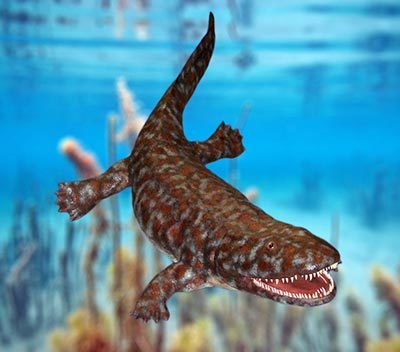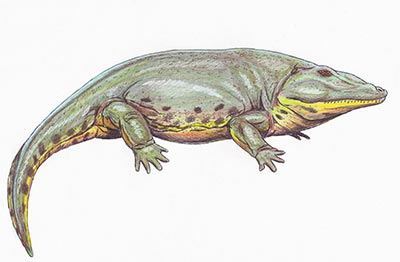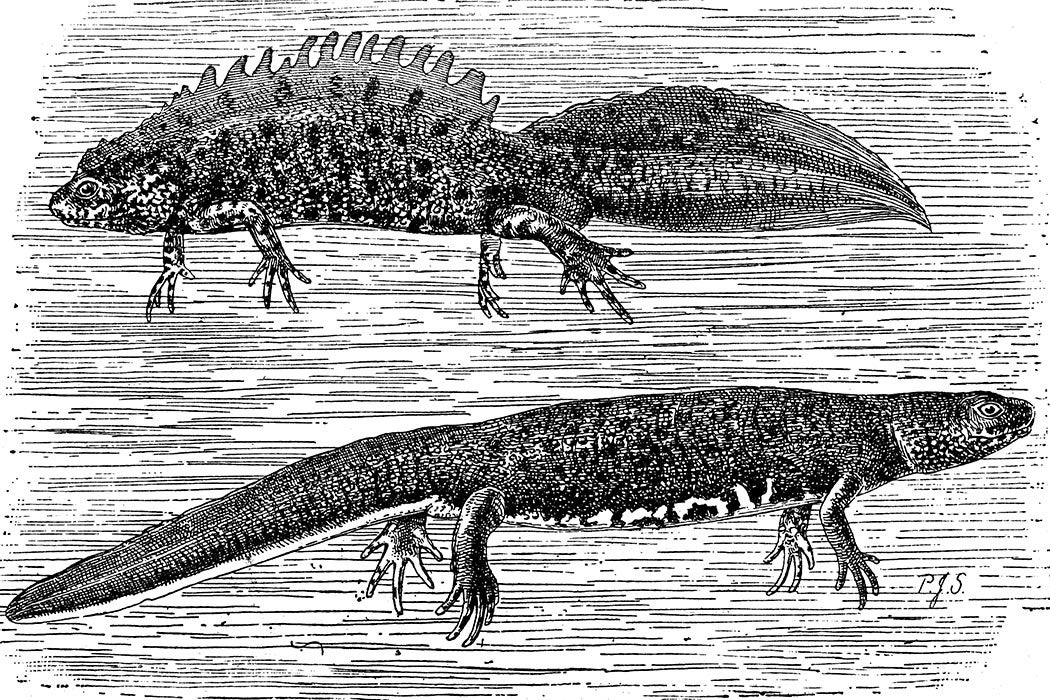Everyone knows about the dinosaurs. Any five-year-old can tell you about their massive size, their teeth, and the countless movies made about them. But dinosaurs weren’t always on top, and the discovery of fossils in an ancient tropical lake in Brazil provides new insights into one of the dinosaurs’ main predecessors: the amphibians. Before the age of dinosaurs, you might say there was an age of amphibians.
As with dinosaurs, ancient amphibians evolved over several geologic periods and were found in a huge variety of shapes and sizes. The earliest, the Ichthyostegelia, emerged in the late Devonian period and resembled modern salamanders with broader tails. These were soon supplanted in the Carboniferous period by the completely aquatic Lepyspondyli, whose boomerang shaped heads would have been either too heavy or too impractical to function on land.

And so these ancient creatures evolved, down through the entire Carboniferous era and into the Permian era, just before the emergence of dinosaurs.
A characteristic of the Permian is that larger terrestrial fauna began to emerge, and amphibians were no exception. The mighty Eryops, for example, a suborder of the Labyrinthodontia (literally “Labyrinth teeth”), grew to more than eight feet long. The skull alone was more than two feet wide. And it had many teeth. Unlike most earlier amphibians, Eryops had powerful legs and was completely terrestrial.

Large terrestrial amphibians persisted into the early Triassic. One of the best known examples, represented by many specimens, is the enormous, swamp-dwelling Mastodonsaurus. The largest Mastodonsaurus had a head around four feet long—compare that with a large contemporary saltwater crocodile, where the largest known skull is less than three feet. The estimated body length for the largest Mastodonsaurus is around 15-20 feet, and most of that isn’t the tail. Two holes in the snout opened for two exceptionally long front teeth, which stood above a mouth that was already full of sharp, conical teeth.
The remarkable aspect of the fossils retrieved in Brazil is how many new amphibian species were discovered. The find sheds light on the diversity and evolution of prehistoric amphibians, especially in the southern hemisphere; most known amphibian fossils have come from North America. The find also draws attention to these often overlooked prehistoric creatures, which have since been upstaged by the larger and more spectacular dinosaurs. Dinosaurs may have captured our imagination, but amphibians deserve our attention as well.







